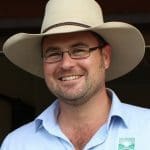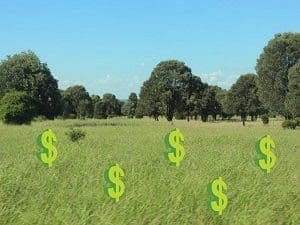Bear Trap #1 Assumptions
I like the play on words that says if you ‘assume’ it will make an ‘ass’ out of ‘u’ and ‘me’. The big assumptions that I see being made are:
- Assuming that a profit will be made (both on a trade and in general)
- Assuming ‘it’ will work
- It worked last time/previously, so it will work again
The cattle market continues to fluctuate and different classes of animals change at different rates. Therefore where a maximum gross margin can be made will change as well. Using our cattle trading spreadsheet, a trade can be analysed in under 5 minutes! A trade I analysed recently was going to lose $30,000 when the exact same trade last year made $50,000. That was 5 minutes well spent. I recommend calculating your gross margin per LSU/DSE. This is the best way to determine how much you are being paid for your grass and allow for easy comparison between different classes of animal.
Tip: Take a few minutes to do the figures
Tip: Calculate your gross margin on a $/LSU or $/DSE basis
Bear Trap #2 Not taking a profit
“You can’t go broke making a profit”!
The trap here is thinking that the market will stay at its current highs. We don’t know what the market is going to do – nobody does. International indicators would point towards the market declining. We are competing in a global protein market and if we outprice ourselves from the purchaser (i.e. they choose chicken, pork etc) then supply/demand laws dicate the market must drop.
The solution is to do the numbers and look for opportunities to realise profits where you can. By this I mean actually selling cattle to turn paper value into cash. Provided you are matching stocking rate to carrying capacity, you can also look at buying in the same market. If you haven’t sold anything whilst the market is running red hot, then these record prices may as well never have occurred.
Tip: Do the numbers and make strategic decisions to realise profits
Bear Trap #3 Reckless spending
It is easy to get carried away with the high prices and big sales income. The trap is spending the income before it is actually profit. We’ve seen massive increases in cost of production in our ProfitProbe™ benchmarking the past two years. Some of this is genuine catchup R&M and needed to happen. There is also a lot of emotional spending on wants (not needs). There is nothing wrong with this, as long as it is coming out of profit, not income. Again, do the numbers and monitor business performance. Plan (budget), monitor (actuals) and manage accordingly (make decisions). There are some good profits to be made for the good business managers. There is the opportunity to invest in the business, reduce debt, invest elsewhere, build a cash buffer – all very exciting. I can’t emphasise enough that this needs to occur out of PROFIT though. List out the spending options, analyse returns and make a decision. Be honest with yourself as to whether you are spending based on a business decision or a lifestyle/emotional decision.
Tip: Maximise profit and spend/save strategically
Tip: Be honest with your spending decisions: business or pleasure?
Bear Trap #4 Buying land without the money first
There is some big money being spent on land at the moment. The trap is getting overexcited about land prices and spending money that you hope you’re going to get in the future. Hope is not a strategy! I did some back of the envelope calculations using average ProfitProbe™ data. This showed that unless you had approximately 70% deposit in purchasing additional land, then you needed external cash flow (e.g. from existing business) to be able to repay the borrowed money. This obviously changes with actual purchase price and your business performance. The question then becomes is it a real estate decision or production business decision. If the intent is to buy and hold the land then there MUST be surplus cash flow from the overall business to provide capacity to repay debt (if you choose to). If the intent is to trade the land, then there MUST be surplus cash flow from the overall business to provide capacity to repay debt (if you choose to). It doesn’t change! I’m not against buying land. We are typically employed to help people increase profit and hence I’m against making decisions that don’t have a good risk/return balance.
Tip: Look at the numbers over a long term period when deciding on a land purchase. What impact will it have on cash flow and net worth
Overall
- Know and manage your cost of production ($/kg etc)
- Maximise your gross margin ($/LSE, DSE, ha)
- Minimise/manage your overheads
 David McLean is the general manager of Resource Consulting Services (RCS) . This article was originally published on the RCS website and is republished here with the permission of the author.
David McLean is the general manager of Resource Consulting Services (RCS) . This article was originally published on the RCS website and is republished here with the permission of the author.


Well said, RCS !! Step back everyone, take a deep breath, and get some perspective …
At current prices for grass being paid for property, I see an expectation from Pastoralists and Graziers of $2,750 per Beast (as an Average across the entire annual turnoff); and over the term of any loan: and a Loan to Valuation (underlying fundamental value, not spot price) approaching 80%!
An Investment fits the definition of one, when Return on Invested Capital is greater than the Cost of Capital (through the cycle).
EBIAT or NOPAT is the amount of earnings left over from operations: and is the amount available for Debt and/or Dividends.
Cumulative Risk measurements (including tail-risk) in the grassland savannah maybe around 19% pa (implying an earnings multiple of around 5.3-times EBIAT. Or 5.3-years to pay off the WIWO operation.
A 5.0% number based on net profit is not the right number to use. It is after debt service, and implies a 20-times profit; when no-one gives their profit figures: do they?
A transparent company listed on the ASX may have a long-term Price Earning Ratio of around 14.5-times. How does a pastoral operation get to 20-times or better when they incur more than twice the risk and therefore a higher discount.
The other matter of note is the land cannot be separated from the operation: as the Land in a pastoral grazing context, IS the FACTORY!
Be careful …
Food for thought, people.
Just saying …